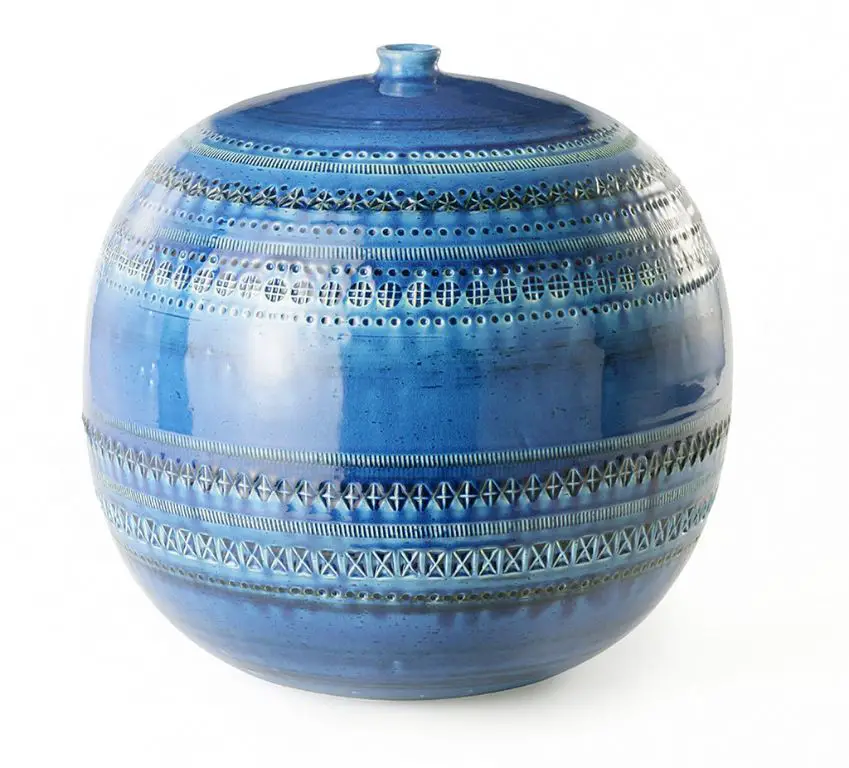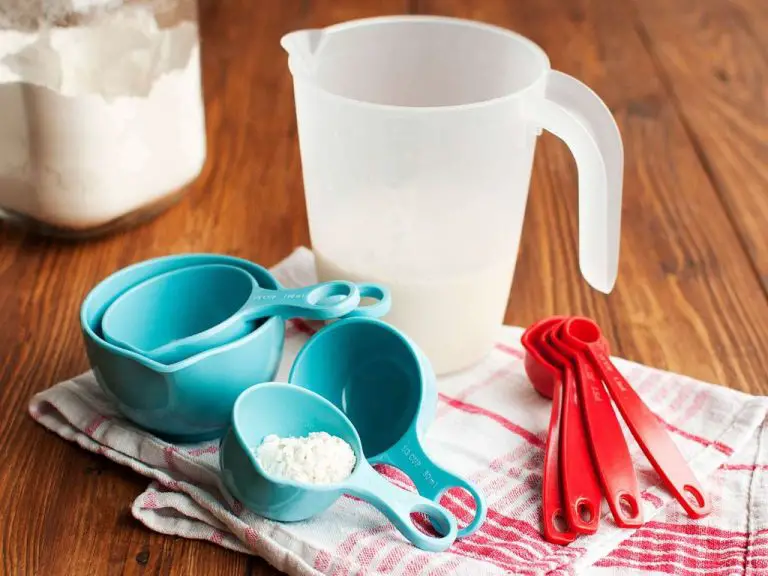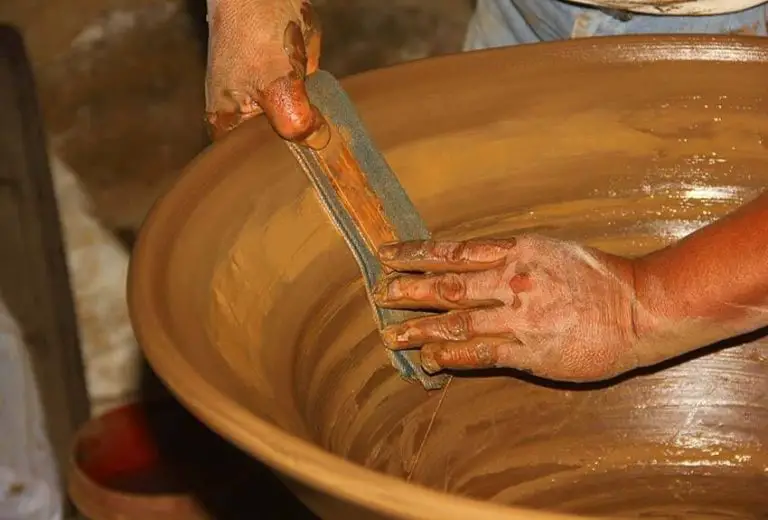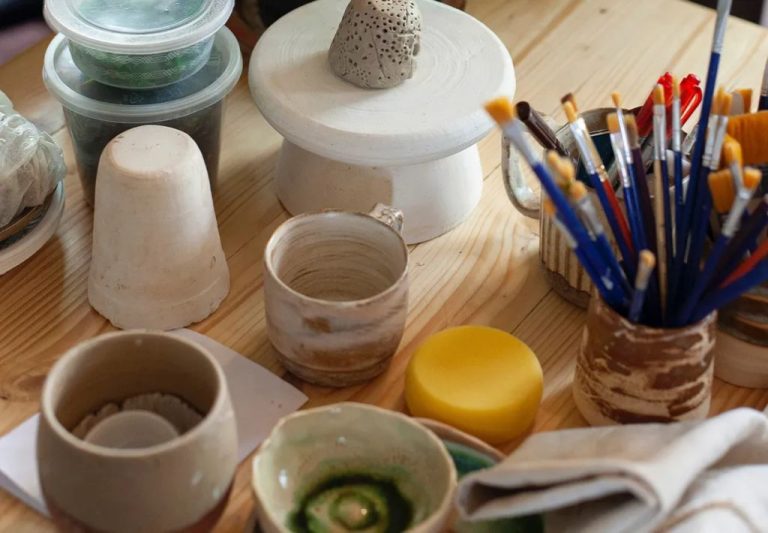How Do I Know If I Have Bitossi Pottery?
History of Bitossi Pottery
The history of Bitossi pottery began in 1926, when Guido Bitossi founded his shop in Montelupo Fiorentino, near Florence, Italy. He descended from a long line of ceramicists in the area and carried on the tradition of making terracotta pottery. The company focused on traditional Italian ceramic designs through World War II.
In the post-war years, Bitossi brought in new designers like Aldo Londi to revitalize the styling of the pottery. The company shifted to brighter colors and more innovative, modernist shapes in the 1960s. Some of the most notable Bitossi designers from this era include Elena Salmistraro, Giuseppe Amato, and Angelo Biancini. Their creations became synonymous with mid-century Italian design.
By the 1970s, Bitossi was using experimental materials like metallic oxides to create striking glazes in turquoise and red. The company continued to push boundaries and reinterpret Italian ceramic tradition up through the 1990s.
Characteristics of Bitossi Pottery
Bitossi pottery is known for its innovative use of colored glazes and abstract, modern shapes. Instead of traditional terra cotta, Bitossi pieces utilize vibrant hues like cobalt blue, leafy greens, sunny yellows and more. The glazes are often layered, with one color bleeding into another in beautiful gradients.
The forms are imaginative and groundbreaking as well. Bitossi vases, bowls, and other objects forgo classical silhouettes for bold, geometric profiles with a very mid-century modern aesthetic. Many pieces also incorporate interesting textures, like ridges, dots, or sweeping curves pressed into the clay.
According to Elle Decoration, “The finished, glazed pieces were wonderfully tactile, with their matte, sandblasted surfaces contrasting with the high-gloss interiors.” https://www.elledecoration.co.uk/design/a39003379/bitossi/
This innovative use of color, shape, and texture came to define the Bitossi look and make their pottery stand out from traditional Italian ceramics.
Notable Bitossi Ceramic Items
Bitossi is renowned for its innovative ceramic designs that push the boundaries of traditional pottery. Several of their most iconic and collectible pieces include:
Alto Vases
The elegant Alto line features tall slender vases with an elongated teardrop shape. They have a modern, minimalist look often in bold monochromatic colors like black, white, or red. The sleek profile became an iconic symbol of mid-century Italian design.
Rays Vases
Distinctive Rays vases have a bulbous body with vertical ridges or “rays” around the exterior. They come in varied two-tone color combinations. This grooved texture creates a unique visual effect. The Rays design was one of Bitossi’s most commercially successful.
African Mask Vases
These figural vases depict tribal mask faces in relief. Their modernist interpretation of African art and culture was avant-garde for the time. The masks project a striking visage in matte black or terracotta finishes.
Harlequin Bowls
Harlequin bowls feature a diamond patchwork pattern reminiscent of the Commedia dell’Arte. The eye-catching color-blocked squares give them a lively, geometric look. Harlequin was one of Bitossi’s most whimsical, playful creations.
Ciuffo Vases
The Ciuffo series has a rounded, wavelike silhouette inspired by Italian avant-garde sculpture. Their distinguishing feature is the pierced handles shaped like stylized tufts or “ciuffi.” The freeform handles contrast beautifully with the flowing organic vessel.
Bitossi Marks and Signature
One of the best ways to identify Bitossi ceramic pieces is by looking for specific marks and signatures. Starting in the 1970s, many Bitossi items were embossed with a name stamp, often including just the word “Ray,” “Italia,” or “Bitossi” on the bottom. Some pieces also have the fuller company name stamped, such as “Ceramiche Artistiche Bitossi.”
In addition to embossed markings, Bitossi frequently used stickers with the Bitossi logo on the bottom of items. These oval stickers often say “Bitossi” or “Bitossi Italia” in blue or gold lettering (Source). The presence of one of these signature stickers is a strong sign a ceramic piece is authentic Bitossi.
However, be aware that some fakes exist with Bitossi markings added later. Carefully examine markings to ensure they are original and consistent with the glazing and production of the item. Authentic Bitossi markings are smooth, with no raised edges, and should not look added on.
Evaluating Condition and Authenticity

When trying to determine if a piece is authentic vintage Bitossi, there are several things to look for:
Look for bright glazes without wear or fading. Bitossi glazes were known for their vibrancy, so faded colors may indicate a fake. Check that decorative patterns are crisp and clear.
Feel the weight and thickness of the material. Authentic Bitossi is handmade from high-quality clay and has some heft to it. Fakes tend to be lighter and thinner.
Examine the underside for markings. Genuine vintage Bitossi pieces will be marked with the Bitossi signature – either a single letter B, the word Bitossi, or the ray logo. The mark may also include the pattern name or shape number.https://www.homesandantiques.com/antiques/collecting-guides-antiques/collecting-bitossi
Assess the overall craftsmanship and design details. Bitossi ceramics have very clean lines and high quality construction. Check that decorations are precise with no sloppy application or smudges.
Estimated Value of Bitossi Pieces
The estimated value of Bitossi pottery pieces depends on several factors like rarity, size, and condition. Classic Bitossi vase designs tend to sell in the range of $100 to $300 or more. Rare or unusually large statement pieces can fetch $500 to $1,000 or higher on the current market. Truly exceptional museum-quality Bitossi ceramics may sell for even greater prices at fine art auctions and galleries. According to sales data from leading online antique and vintage markets like 1stDibs, Bitossi pottery maintains strong collector interest and value appreciation over time.
Some of the most valuable and sought-after Bitossi ceramic works include designs by famous Italian architects and designers like Ray and Charles Eames. Archival production samples and one-of-a-kind prototypes can also command premium pricing from Bitossi collectors. As with most collectibles, verifying authenticity and provenance is key when evaluating the market value of any purported Bitossi piece.
Caring for and Maintaining Bitossi
Proper care for Bitossi pottery is important for preserving its value and beauty over time. As with most ceramic pieces, gentle handling and washing is recommended.
Hand washing Bitossi ceramics by hand using a soft sponge or cloth is advised. Avoid soaking the piece or letting water sit on decorative glazes. Mild, pH-neutral dish soap can be used but harsh chemicals or abrasive scrubbing should be avoided as it may damage the glaze. After washing, dry the piece thoroughly with a soft towel.
It is also important to protect Bitossi pottery from scratches in day-to-day use. Using felt pads under any ceramic pieces can help prevent scratches and chips from forming on the bottoms or feet. Additionally, care should be taken to avoid exposing Bitossi ceramics to extreme temperature fluctuations or shocks, such as moving directly from hot water to cold. Gradually adjusting temperature is best.
For storage, Bitossi pieces should be kept safely in an area away from direct sunlight, temperature swings, and high humidity. Proper storage helps preserve the condition and value of these handmade Italian ceramics over time. With proper care, Bitossi pottery can be enjoyed for generations.
Notable Bitossi Collections
Some of the most significant public collections of Bitossi ceramics can be found at the following museums:
The Smithsonian American Art Museum in Washington D.C. houses an extensive collection of 20th century Italian ceramics, including numerous pieces by Bitossi. Several exceptional examples of Bitossi’s mid-century designs and glazes, including pieces by noted designer Carlo Scarpa, are on display.
The Metropolitan Museum of Art in New York City has a wide-ranging assortment of Bitossi pottery representing the manufacturer’s diverse production over many decades. Especially noteworthy are experimental pieces from the 1960s and 70s that exhibit Bitossi’s innovations in colors and shapes.
Boston’s Museum of Fine Arts features a survey of Bitossi’s most characteristic wares. The collection illustrates the evolution of the company’s style, glazes, and techniques through cherished patterns such as the Africa and Raymond lines.
Bitossi ceramics entered the collections of the British Museum in London as early as the 1950s. The museum holds important examples that highlight the collaborative work between Bitossi’s artisans and major designers of the postwar era.
Current Bitossi Market
Bitossi ceramics remain highly collectible in the present day, with vintage pieces from the mid-20th century commanding premium prices. An avid community of Bitossi collectors exists, primarily located in the United States and Europe. Rare and unique Bitossi pieces are regularly featured in premier auction houses like Sotheby’s and Christie’s, as well as online auction platforms like eBay.
The most valuable and sought-after Bitossi antiques come from what collectors refer to as the company’s “golden age” – the decades after World War 2 when the Bitossi factories were producing innovative Art Deco and mid-century modern designs. Certain patterns and glazes like the blue and white “Ray” design and the vibrant metallic “Africana” glazes command premium pricing at auction when in excellent condition.
More common Bitossi production pieces from the 1960s-1980s can still sell for upwards of $50-100 for decor items like ashtrays, vases, and planters. Unique or rare one-of-a-kind prototypes and trials can sell for several hundred to thousands of dollars. Even recent Retrò series pieces are popular with collectors and interior designers.
The vibrant collector community ensures that quality vintage Bitossi will likely continue appreciating in value and remain an important part of ceramic and mid-century modern collecting for the foreseeable future.
How to Acquire Bitossi Pottery
There are several places to look when acquiring vintage or antique Bitossi pottery pieces:
Vintage and antique stores – These types of specialty retail stores are great places to find Bitossi pottery, particularly in locations known for antiques like New England, the Midwest, the South, and West Coast cities. Stores will often have a range of eras and styles of Bitossi available to browse.
eBay and other online auctions – Sites like eBay provide a global marketplace to search for and bid on Bitossi pottery. This can be a good option for finding rare or hard to find pieces. Be sure to review the seller’s reputation and item condition before bidding.
Estate sales and flea markets – Estate sales after a person’s passing and flea markets can yield hidden treasures of Bitossi. Search carefully, as pieces may need cleaning or restoration. Know how to spot authentic Bitossi markings and design styles.
Specialty collectible retailers – Some antique dealers focus specifically on art pottery like Bitossi. These types of verified dealers can help assess authenticity and value for serious collectors. Expect to pay premium prices for pristine, verified pieces.



